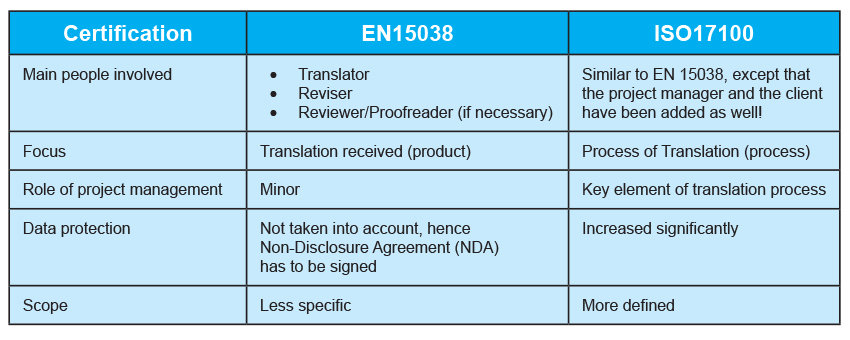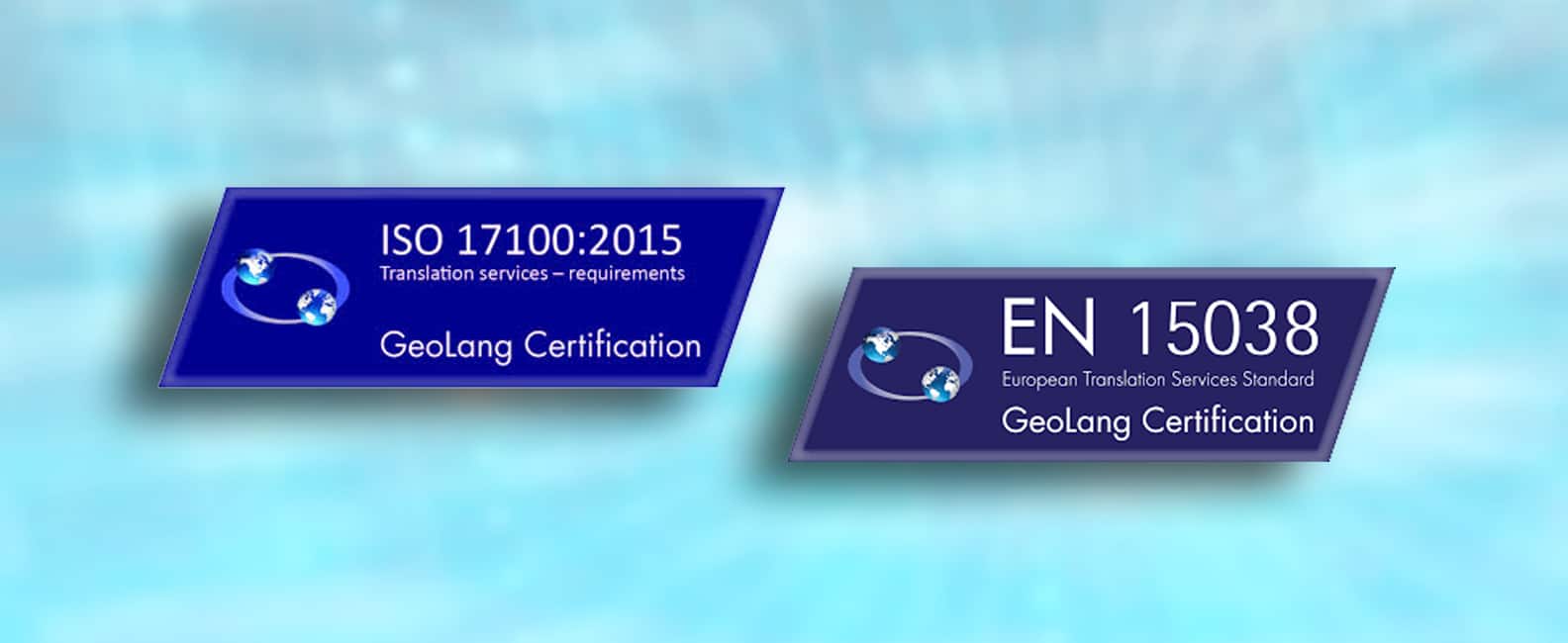This is the second of the ISO Series. (To view the first part, https://www.translationsingapore.com/zh/what-is-iso-171002015/) In the first issue, we introduced what ISO 17100 is about. We mentioned that ISO 17100 is the international standard that supersedes EN 15038, the European translation standard. The differences between ISO 17100 and EN 15038 are minor, but we will introduce them in more detail here.
The table below depicts the differences between ISO 17100 and EN 15038.

What difference does it make after EN15038?
ISO 17100 is very similar to EN15038 as the original requirements from the European standard are transferred to the ISO framework. While EN15038 focuses mainly on the translation itself (product), ISO 17100 on the other hand outlines the process of translation.
The substantial difference lies in the focus and scope. ISO 17100 is more elaborate compared to EN 15038. By comparing the list of terms, ISO 17100 has a longer and more detailed list. Existing terms are also renamed and updated, coupled with the expansion of definitions and addition of new terms. For example, there is a distinct difference between ‘revision’ (bilingual check: to check for accuracy between the source and target text) and ‘review’ (checking of target text to ensure the suitability for the agreed purpose).
With regards to the main people involved in the translation, EN 15038 includes the translator, reviser and the reviewer/proofreader if deemed necessary. However, for ISO 17100, two more key players are integrated into the translation process: You (the client) and our staff (the project managers).
The role of the project manager is to manage and co-ordinate the completion of the language projects. While the project manager is actively involved in the translation process, he/she controls the entire workflow as well! Not only is a thorough understanding of the translation industry required, the competence of the project manager is essential too, in order to select the right translator and reviser for your project. This plays a very important role in the quality of the translation. The new ISO recognizes the large role that the project manager plays in the translation process, and that it involves not just the translator and reviser.
You, the client, also play a big role in the process as not only do you have to send us the source content, you are also encouraged to provide us any terminology lists, style guides or helpful information regarding the project should you have any. This is also explicitly laid out in the new ISO.
With regards to data protection, ISO 17100 states that these requirements are mandatory as translations are sometimes confidential. They can also involve sensitive information from the clients.

